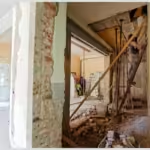In this article:
We will explore the crucial process of safely updating the WordPress core. Whether you are a small business owner, a freelance developer, or a digital marketer with some WordPress experience, this guide is tailored to help you maintain your website’s stability and security. We will cover everything from preparing your site, testing updates in a staging environment, to managing plugins and themes, and handling any issues that arise after updating.
Key points covered in this article include
- Understanding the importance and types of WordPress core updates
- How to prepare your website with backups and environment checks
- Assessing plugin and theme compatibility before updating
- Using staging environments to test updates safely
- Step-by-step instructions for updating the live site
- Troubleshooting common post-update problems
- Automating updates with tools like Modular DS
- Best practices for long-term WordPress site maintenance
- Common mistakes to avoid during updates
- Real user experiences and community insights
WordPress Core Updates and Their Importance
The WordPress core is the fundamental software that powers your website. It includes the essential files and code that make WordPress function. Keeping this core updated is vital for your website maintenance because updates often include security patches, performance improvements, and new features.
There are several types of WordPress core updates
- Major updates These introduce new features and significant changes. For example, moving from WordPress 5.8 to 5.9.
- Minor updates These usually fix bugs and improve stability without changing core features.
- Security patches Critical fixes that address vulnerabilities to protect your site from attacks.
- Automatic updates WordPress can automatically apply minor and security updates to keep your site safe without manual intervention.
Regularly updating the WordPress core is critical because outdated versions can expose your website to security risks, cause incompatibilities with plugins and themes, and lead to slower performance. Delaying or skipping updates increases the chance of your site being hacked or malfunctioning.
Ignoring updates may also cause your site to miss out on new features and improvements that enhance user experience and SEO.
Preparing Your Website for a Safe WordPress Core Update
Backing Up Your Website
Before making any changes, it’s essential to create a full backup of your website. This includes your database, files, themes, and plugins. A reliable backup ensures you can restore your site if something goes wrong during the update.
Popular backup tools include
- UpdraftPlus – user-friendly and supports scheduled backups
- BackupBuddy – comprehensive backup and restore features
- Manual backups – via hosting control panel or FTP for advanced users
Manual backups involve downloading your entire WordPress directory and exporting your database through tools like phpMyAdmin. This method is a good fallback if plugins fail.
Checking Hosting Environment Compatibility
Your hosting environment must meet WordPress’s requirements for the new core version. This mainly involves
- PHP version WordPress recommends PHP 7.4 or higher for optimal performance and security.
- Server resources Ensure your hosting plan has enough memory and processing power to handle updates smoothly.
Contact your hosting provider or check your hosting dashboard to verify these details.
Reviewing Website Health and Performance
WordPress includes a Site Health tool (found under Tools > Site Health) that highlights issues like outdated PHP versions, slow database queries, or security concerns. Fixing these before updating reduces the risk of errors.
Look for any existing errors or warnings and address them to ensure a stable update process.
Disabling Auto-Updates Temporarily
While automatic updates are convenient, temporarily disabling them gives you full control over when and how updates occur. This helps avoid unexpected downtime or conflicts.
You can disable auto-updates by adding the following line to your wp-config.php file
define( 'WP_AUTO_UPDATE_CORE', false );Remember to re-enable auto-updates after you complete your manual update process if you want to keep receiving automatic security patches.
Assessing Plugin and Theme Compatibility Before Updating WordPress Core
Many update issues stem from incompatible plugins or themes. Ensuring compatibility before updating the WordPress core is crucial to prevent site breakage.
How to Check Compatibility
- Review changelogs Check plugin and theme update notes for compatibility information with the new WordPress version.
- Compatibility check plugins Tools like PHP Compatibility Checker or WP Checkup can scan your site for potential issues.
- Developer support Consult plugin/theme developers or community forums for advice on compatibility.
Update Plugins and Themes First
Always update your plugins and themes before updating the WordPress core. This ensures they are ready to work with the new core version.
Handling Custom Code and Child Themes Safely
If your site uses custom code or child themes, verify that these customizations won’t conflict with updates. Avoid editing core theme files directly; instead, use child themes to preserve your changes.
 What to Do When a WordPress Plugin Breaks After Update
What to Do When a WordPress Plugin Breaks After UpdateUsing a Staging Environment to Test WordPress Core Updates
A staging environment is a clone of your live site where you can safely test updates without affecting your visitors.
What Is a Staging Environment?
It’s a separate space on your server or hosting account that mirrors your live site’s content, plugins, themes, and settings.
How to Create a Staging Site
- Many hosting providers offer one-click staging setups (e.g., WP Engine, SiteGround).
- Plugins like WP Staging or Duplicator can create staging sites.
- Manual setup via subdomains and database cloning is also possible but more technical.
Applying WordPress Core Updates on Staging
Once your staging site is ready, perform the WordPress core update there first. This allows you to spot any issues before touching your live site.
Testing Website Functionality Thoroughly
After updating on staging, test all critical features
- Contact forms and submission processes
- E-commerce checkout and payment gateways
- Custom plugins or integrations
- Page load speed and responsiveness
Identify any errors or broken features and resolve them before proceeding.
Step-by-Step Guide to Safely Update WordPress Core on Live Site
Put Your Site Into Maintenance Mode
Maintenance mode temporarily hides your site from visitors during updates, preventing a poor user experience.
Use plugins like WP Maintenance Mode or SeedProd to activate this easily.
Update WordPress Core
You can update WordPress core via the dashboard by navigating to Dashboard > Updates and clicking “Update Now.”
Alternatively, perform a manual update using FTP or your hosting control panel by uploading the new WordPress files.
Recommended Update Order
- Update your theme first.
- Update all plugins, starting with free plugins, then premium ones.
- Update the WordPress core.
Clear Caches and CDN
After updates, clear your site caches and any CDN caches to ensure visitors see the latest version.
Post-Update Verification Checklist
- Check site speed and responsiveness
- Test forms, shopping carts, and login functionality
- Look for broken links or missing images
- Review error logs in your hosting panel
- Ensure user experience is seamless
Monitor Update Notifications and Logs
Keep an eye on WordPress update notifications and server logs for any warnings or errors that may appear after updating.
Troubleshooting Common Issues After WordPress Core Update
Sometimes, updates cause problems. Here’s how to handle common issues safely.
Common Problems
- White Screen of Death A blank page usually caused by PHP errors or plugin conflicts.
- Plugin conflicts Plugins not compatible with the new core version.
- Theme errors Outdated themes causing layout or functionality issues.
- Database connection issues Errors connecting to your database.
Revert Updates Safely
Use your backups to restore the site to the previous working state if needed.
Plugins like WP Rollback allow you to revert plugin or theme updates easily.
Deactivate Problematic Plugins or Themes
If you can’t access your dashboard, use FTP or your hosting panel to rename plugin or theme folders to deactivate them.
Fix Stuck Maintenance Mode
If your site shows a maintenance message indefinitely, delete the .maintenance file from your WordPress root directory via FTP.
Seek Professional Support
If problems persist, contact a developer or your hosting support for assistance.
Automating and Managing WordPress Core Updates Efficiently
Managing updates manually can be time-consuming, especially for agencies or professionals handling multiple sites.
Managed WordPress hosting providers like WP Engine offer automatic updates with rollback features to keep your sites secure and stable.
For centralized control, Modular DS is a powerful tool designed for agencies and professionals. It automates and centralizes WordPress site management, including updates, backups, and security checks.
 Update Your WordPress Site Without Downtime Using ModularDS
Update Your WordPress Site Without Downtime Using ModularDSComparison: Modular DS vs. Other WordPress Management Tools
| Feature | Modular DS | Typical Competitor |
|---|---|---|
| Usability | Intuitive dashboard, easy automation | Steeper learning curve |
| Integration | Supports multiple hosting providers and plugins | Limited integrations |
| Cost (approx.) | Starts at $29/month | Varies, often higher |
| Backup Management | Automated backups with easy restore | Manual or limited backup options |
| Update Scheduling | Flexible scheduling and testing workflows | Basic or no scheduling |
Pros and Cons of Automated Update Services
- ✅ Save time and reduce human error
- ✅ Centralized control for multiple sites
- ✅ Automated backups and rollback options
- ❌ May require subscription fees
- ❌ Less hands-on control for some users
Using Modular DS can enhance your WordPress maintenance by making updates more secure, reliable, and seamless. It’s especially valuable for agencies managing many client sites.
Ready to simplify your WordPress core update process? Try Modular DS today and experience efficient, automated website management.
Benefits and Risks
Benefits
Risks
Best Practices and Tips for Long-Term WordPress Site Maintenance
Maintaining your WordPress site over time requires discipline and good habits.
- Set a regular update schedule for WordPress core, plugins, and themes.
- Keep your PHP and server environment up-to-date to ensure compatibility.
- Monitor your site’s health and security continuously using tools and plugins.
- Use logging and monitoring tools to detect issues early.
- Educate your team or clients about the importance of updates and how to perform them.
- Document your update and backup processes for consistency and accountability.
Common Mistakes to Avoid When Updating WordPress Core
- ❌ Skipping backups or making incomplete backups
- ❌ Updating directly on the live site without testing
- ❌ Ignoring plugin and theme compatibility checks
- ❌ Forgetting to clear caches after updates
- ❌ Editing core WordPress files directly
- ❌ Neglecting update notifications and error logs
- ❌ Overlooking activation of maintenance mode during updates

Safely update wordpress core without breaking site
Real User Opinions and Experiences on Safely Updating WordPress Core
Across forums like Reddit r/WordPress and WordPress.org support, users often share concerns about updates breaking their sites. Common advice includes always backing up, testing on staging, and updating plugins/themes first.
Many users report that using centralized tools like Modular DS has significantly reduced their update-related headaches. Agencies praise its automation and rollback features, which save hours of manual work and prevent downtime.
“Since switching to Modular DS, managing updates across dozens of client sites has become effortless. The automated backups and staging integration give me peace of mind.” – Jane D., WordPress Agency Owner
Lessons learned from update failures often highlight the importance of preparation and testing. Users who skip these steps frequently face downtime and costly fixes.

Safely update wordpress core without breaking site
Summary and Key Takeaways for Safely Updating WordPress Core
To safely update your WordPress core without breaking your site, remember these essentials
- Always create full backups before updating.
- Check plugin and theme compatibility and update them first.
- Use a staging environment to test updates thoroughly.
- Put your site in maintenance mode during live updates.
- Follow the recommended update order: themes, plugins, then core.
- Clear caches and verify site functionality after updates.
- Have rollback plans ready in case issues arise.
- Consider automated tools like Modular DS for efficient, reliable management.
Keeping your WordPress site up-to-date is vital for a stable, optimized, and secure online presence. With the right preparation and tools, you can maintain your site confidently and avoid common pitfalls.
References and Further Reading
Frequently Asked Questions
How often should I update WordPress core?
It’s best to update WordPress core as soon as updates are available, especially security patches. Regular updates keep your site secure and running smoothly.
What is the safest way to update WordPress core without breaking my site?
Back up your site, check plugin and theme compatibility, test updates in a staging environment, put your site in maintenance mode, and update in the recommended order: themes, plugins, then core.
Can I update WordPress core without updating plugins and themes?
It’s not recommended. Plugins and themes may not be compatible with the new core version, which can cause errors or site breakage.
What should I do if my site breaks after a WordPress core update?
Restore your site from a backup or use rollback plugins. Deactivate conflicting plugins or themes via FTP and seek professional help if needed.
How does Modular DS help with WordPress core updates?
Modular DS automates updates, backups, and monitoring across multiple sites, reducing manual work and minimizing risks of update failures.
Is it necessary to use a staging environment for updates?
While not mandatory, using a staging environment is highly recommended to test updates safely without affecting your live site.
How do I backup my WordPress site before updating?
You can use backup plugins like UpdraftPlus or BackupBuddy, or manually backup files and databases via your hosting control panel or FTP.
 Essential tips for updating plugins without breaking your site
Essential tips for updating plugins without breaking your siteWhat is maintenance mode and why use it during updates?
Maintenance mode temporarily hides your site from visitors during updates to prevent them from seeing errors or incomplete pages, ensuring a professional user experience.
We’d love to hear your thoughts! What do you think about safely updating WordPress core? Have you faced any challenges or found useful tips? How would you like to improve your update process? Share your experiences and questions in the comments below!


















